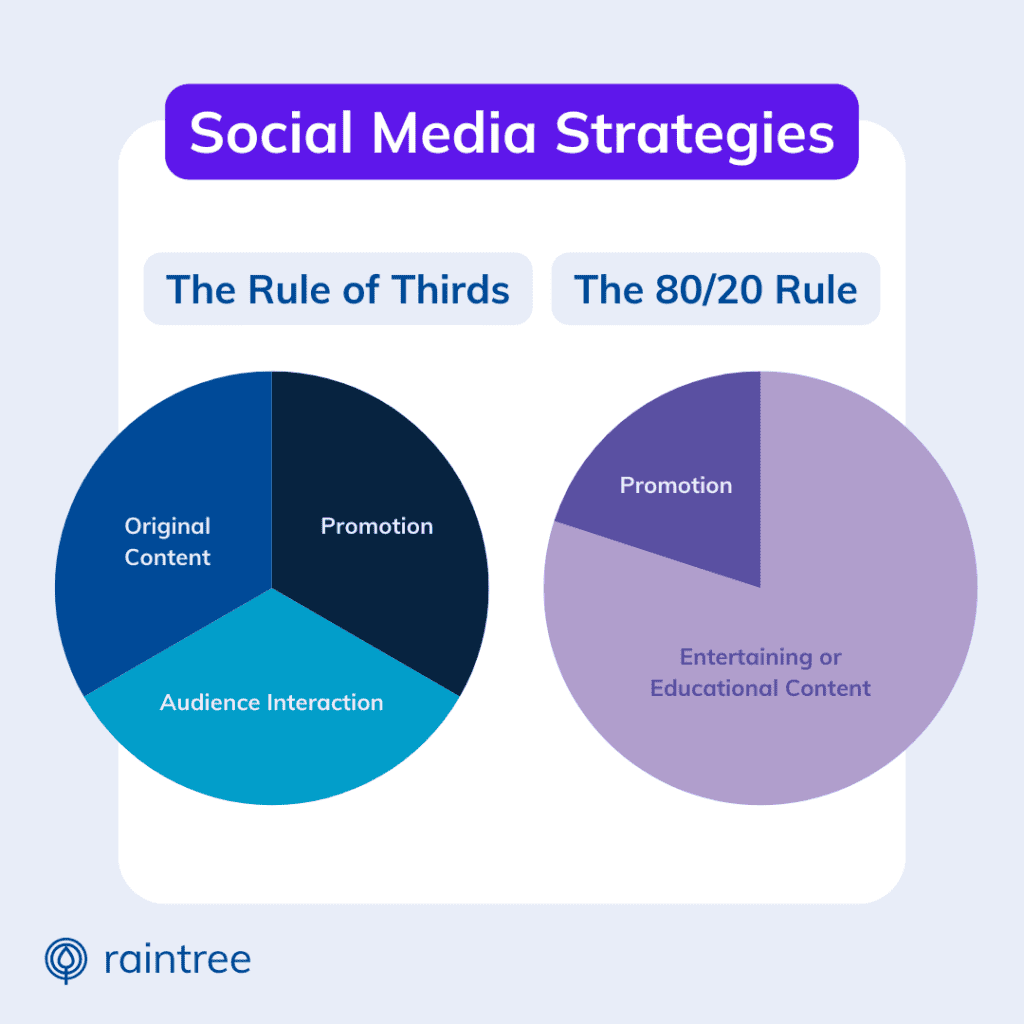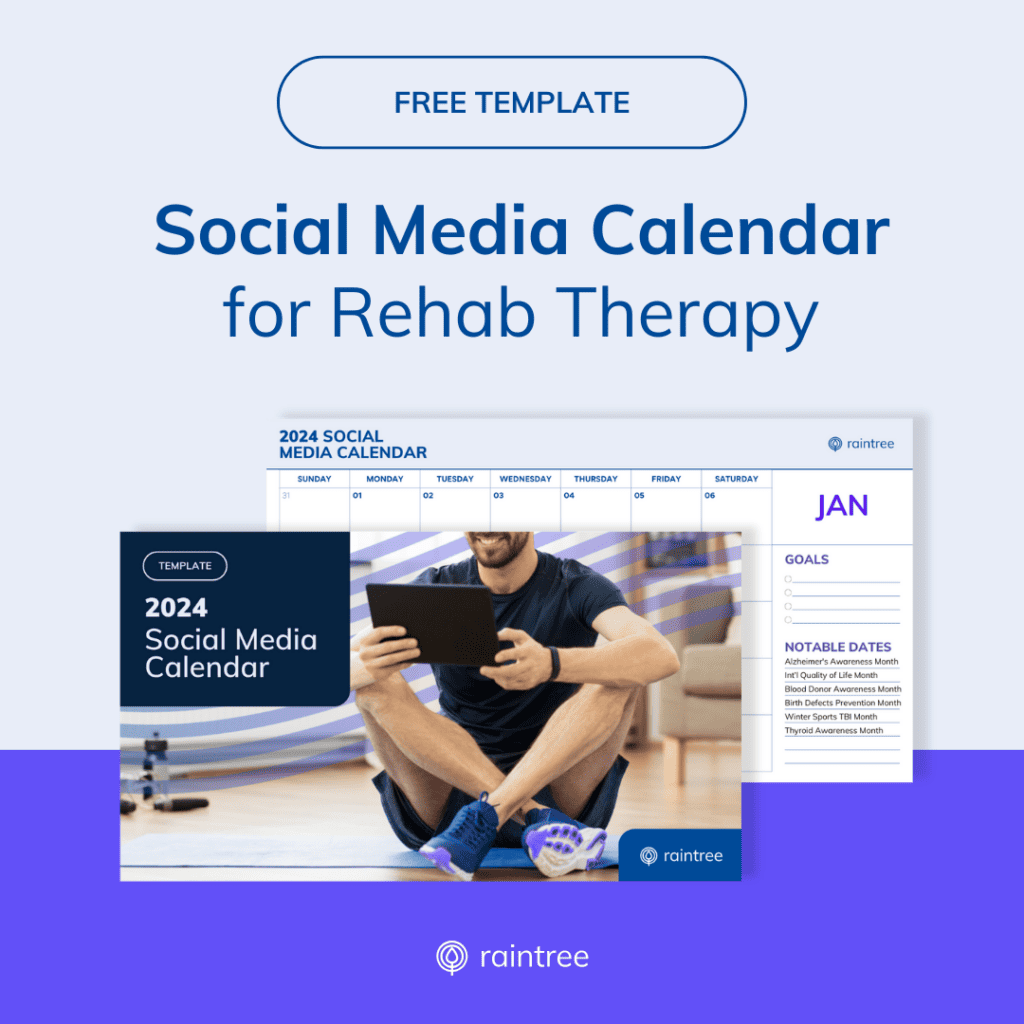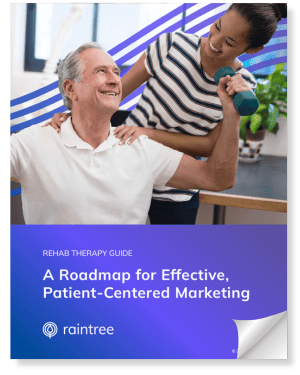For PT, OT, SLP and multi-specialty therapy practices, social media marketing is a great way to grow your business. Still, it’s easy to get overwhelmed or fall behind if you’re operating with a small team (or without a solid plan).
Plus, social media posts can be short and sweet, but they’re not as simple as they seem. Social media success relies on consistency to build momentum and grow a following. Not to mention the time it takes to align your social media calendar planning with the broader business goals.
In this guide, we’ll share lots of ideas and a basic calendar template to help you plan engaging content all year long.
Benefits of Using a Social Media Calendar
Imagine what your days would be like if you never scheduled appointments and just let patients arrive whenever the mood hits them. No thanks. That would be chaos!
Organize Your Social Media Efforts
A reliable schedule is critical for your clinical operations—and the same rings true for your social media channels. With a social media content calendar, you can keep all your great ideas and important messages in one place. Done well, a social media calendar helps marketers stay organized, drafting social media captions, graphics, videos, and other assets well ahead of schedule.
Aligning With Your Marketing Strategies
Planning ahead also means you can take your social media messaging to the next level with more sophisticated, strategic social media campaigns. For example, if you host an annual wellness event, you can promote it well in advance to build attendance, and plan out what kinds of photos and videos to take during the event. If you treat a condition tied to an awareness month, you can plan to share the core messages across a variety of content types throughout the month.
How to Choose Topics for Your Social Media Calendar
To build a solid social media presence, you need to post regularly, and you may want to spread content across several social media platforms. That said, it’s better to focus on one or two channels until you have established a solid posting cadence before branching out to more.
How Often Should You Post?
Let’s say you choose to post on Facebook and LinkedIn to start. How often should you post?
It depends on the platform, because very social media channel is different. For example, recent social media research revealed that companies post between four days per week to every day on Facebook and four to six days per week on LinkedIn.
When it comes to planning content in advance, that means you need to develop at least four to seven unique posts each week. As you add more sites or increase your content variety, you’ll need to generate more ideas.
Finding the Right Balance
Your goal with social media is to build an engaged audience that wants to hear from you. If you only share promotional content, you likely won’t hit the mark. Instead, you want to create a balance that showcases your expertise, connects to your audience’s interests, and provides unique value.
Over time, you’ll find the best mix of content that works for your practice and your audience. To get there, you can try out a few social media “rules” to find your just-right balance:
- Rule of Thirds: With this approach, you break your content down into three categories. Approximately one-third should promote your practice. Another third should focus on created or user-generated content (UGC), such as patient questions or testimonials. And the final third of your posts should focus on interacting with followers and other accounts.
- 80/20 Rule: According to the 80/20 rule, 80% of your content should not focus on promoting your practice. Instead, it should educate or entertain your audiences. The remaining 20% can be promotional.

Where to Find Social Media Content Ideas
You need a steady stream of content ideas to keep your social feeds engaging to your audiences. And you don’t have to come up with them all on your own.
Patient Feedback and FAQs
What’s one of the best sources for rehabilitation or physical therapy content ideas? Your patients. For example, you can answer patients’ most common questions or highlight positive reviews you’ve received. (But don’t forget: Healthcare social media managers should stay mindful of patient privacy and HIPAA rules.)
Artificial Intelligence
Artificial intelligence (AI) tools, such as ChatGPT, can support your brainstorming and even draft posts for you. Be careful not to depend too heavily on AI, however, as your content can feel repetitive and inauthentic. Always make sure to carefully read, fact-check, and edit AI-generated content.
Following the (Data) Trends
You can also plan your content around broader audience trends. One free tool to try is Google Search Console. While this resource provides valuable insights into your website performance, you can use it to uncover popular search topics that can inspire your social posts.
Social Media Calendar Ideas for PT, OT, SLP and ABA
As you kick off your social media calendar development, you can turn to proven sources to pre-populate some initial ideas. Having some content prepared in advance helps you keep a steady posting cadence. Even so, you should keep some space on your calendar to celebrate new wins or jump on trends that can draw attention to your practice.
What type of content should you consider? Some tried-and-true ideas include:
- Awareness and observance days
- Educational content
- Staff highlights
- Repurposed content
- Memes and trends
Awareness and Observance Days
You don’t have to reinvent the wheel to keep your social media calendar full all year. Many health-focused organizations have established months, weeks, or days to raise awareness about specific conditions, causes, or roles. Focusing on highlighting awareness events tied to conditions you treat regularly in your practice can provide a solid foundation for your social media calendar.
January
All Month
- Alzheimer’s Awareness Month (#ENDALZ, #TheLongestDay)
- International Quality of Life Month
- Blood Donor Awareness Month (#NBDM, #giveblood)
- National Birth Defects Prevention Month (#EveryJourneyMatters, #BirthDefects)
- National Winter Sports Traumatic Brain Injury Awareness Month
- Thyroid Awareness Month (#ThyroidAwareness)
February
All Month
- American Heart Month (#HeartMonth)
- National Cancer Prevention Month (#NationalCancerPreventionMonth)
Observance Weeks & Days
- February 2: Rheumatoid Awareness Day (#RheumDay, #TheRealRD, #RheumAwarenessDay)
- February 4: World Cancer Day (#WorldCancerDay, #WeCanICan)
- February 13-19: Duchenne Muscular Dystrophy Awareness Week (#Duchenne and #EndDuchenne)
- February 28: International Repetitive Strain Injury Awareness Day (#PreventRSI)
- February 29: Rare Disease Day {#ShowYourStripes, #RareDiseaseDay)
March
All Month
Brain Injury Awareness Month (#MoreThanMyBrainInjury)
Multiple Sclerosis Awareness Month (#MSactivist, #MS, #MSresearch)
National Developmental Disabilities Awareness Month (#DDAwareness, #DDAM, #BeyondtheConvo, #BeyondtheConversation)
National Endometriosis Awareness Month (#Endometriosis)
Trisomy Awareness Month (#TrisomyAwarenessMonth)
April
All Month
Occupational Therapy Month (#OTMonth, #OccupationalTherapy)
National Autism Awareness Month (#CelebrateDifferences, #AutismAcceptanceMonth, #AutismAwarenessMonth)
National Sarcoidosis Awareness Month (#MakeItVisible, #Sarcoidosis)
National Stress Awareness Month (#StressAwarenessMonth)
Parkinson’s Awareness Month (#Take6forPD)
Sjogren’s Awareness Month (#ThisisSjogrens)
Observance Weeks & Days
- April 6: Bohring-Opitz Syndrome Awareness Day (#TogetherWeAreBOS)
- April 19: Congenital Diaphragmatic Hernia Action Day (#CongenitalDiaphragmaticHerniaActionDay)
May
All Month
ALS Awareness Month (#1in400, #ALSAwarenessMonth, #EndALSTogether)
Arthritis Awareness Month (#SeeArthritis)
Better Hearing and Speech Month (#ASHAAdvocacy, #BHSM, #audpeeps, #slpeeps)
Cystic Fibrosis Awareness Month (#CFAwarenessMonth)
Ehlers-Danlos Syndrome Awareness Month (#MyEDSChallenge)
National Osteoporosis Awareness and Prevention Month (#GenerationsOfStrength #osteoporosis)
National Stroke Awareness Month (#StrokeMonth)
Neurofibromatosis Awareness Month (#ICanSayNeurofibromatosis, #NFGetsOnMyNerves, #NFAwareness)
Observance Weeks & Days
- May 6: World Ankylosing Spondylitis Day (#WorldAnkylosingSpondylitisDay, #WorldASDay)
- May 12: International Awareness Day for Chronic Immunological and Neurological Diseases
- May 12: International Myalgic Encephalomyelitis/Chronic Fatigue Syndrome (ME/CFS) Day (#MECFSAwareness)
- Second week in May: National Stuttering Awareness Week (#StutteringAwareness, #SpeakWithEmpathy, #SupportStammering)
June
All Month
Aphasia Awareness Month (#LetsTalkAphasia, #AphasiaAwareness)
National Scoliosis Awareness Month (#ScoliosisAwarenessMonth)
Myasthenia Gravis Awareness Month (#IHaveHeardofMG)
Scleroderma Awareness Month
July
All Month
Juvenile Arthritis Awareness Month (#StrongerThanJA)
Sarcoma Awareness Month (#SarcomaAwarenessMonth, #SarcomaAwareness, #CureSarcoma, #Sarcoma)
Social Wellness Month (#SocialWellnessMonth)
August
All Month
National Immunization Awareness Month (#NIAM, #ivax2protect #ImmunityCommunity)
Spinal Muscular Atrophy Awareness Month (#CureSMA #SMAAwarenessMonth)
September
All Month
Pain Awareness Month (#PainAwarenessMonth, #PainIsReal, #ChronicPain)
World Alzheimer’s Month (#KnowDementia and #KnowAlzheimers, #WorldALZMonth)
Duchenne Muscular Dystrophy Action Month (#DuchenneActionMonth)
Observance Weeks & Days
September 8: World Physical Therapy Day (#WorldPTDay, #WorldPhysicalTherapyDay)
Third full week in September: National Rehabilitation Awareness Week ( #RehabilitationAwarenessWeek, #RehabWeek)
September 25: World Lung Day (#WorldLungDay)
September 25: National Women’s Health and Fitness Day (#WomensHealthFitnessDay)
- September 25: International Ataxia Awareness Day (#AskMeAboutAtaxia)
September 29: World Heart Day (#WorldHeartDay)
October
All Month
National Physical Therapy Month (#PTmonth)
National Audiology Awareness Month
Spina Bifida Awareness Month (#SpinaBifida, #SBAM)
Breast Cancer Awareness Month (#BreastCancerAwareness)
Observance Weeks & Days
October 12-20: Bone and Joint Action Week
October 19: World Pediatric Bone and Joint Day (#WorldPediatricBoneandJointDay)
October 20: World Osteoporosis Day (#CheckYourRisk, #WorldOsteoporosisDay)
October 30: World Hypophosphatasia Day (#WorldHPPDay, #SoftBonesHPP, #HPPaware)
November
All Month
- National Alzheimer’s Disease Awareness Month (#ENDALZ, #TheLongestDay)
- National Diabetes Month (#DiabetesAwarenessMonth, #NDAM, #KnowYourNumbers)
- National Epilepsy Awareness Month (#Epilepsy, #EpilepsyAwareness, #NEAM)
- Prematurity Awareness Month (#PrematurityAwareness)
December
Observance Weeks & Days
December 1: World AIDS Day (#WorldAIDSDay)
December 3: International Day of Persons With Disabilities (#IDPD)
A word of warning, though: You don’t want to over-rely awareness days when planning content for social media. If people are exposed to too much similar content, they may actually tune out instead of paying attention. Choose the topics that resonate with your target audience, and get creative!
Educational Content
Sharing educational content on your social channels can demonstrate the value of your services. For example, you can provide advice on managing specific conditions you see regularly or provide insight on emerging treatment strategies. Also, you can post relevant statistics, such as how many people receive diagnoses for a specific condition in a year or offer perspective on recovery timelines. Quick “how-tos” on healthy lifestyle, exercise, or diet tips could be meaningful to your followers.
Staff Highlights
For many patients, its important to feel connected to their care teams.
One way to showcase your human side is by highlighting your team members on social media. For example, celebrate professional anniversaries or spotlight key accomplishments. Sharing your team’s volunteer activities can demonstrate your commitment to your community. You can also share fun facts like team members’ favorite movies or hobbies to help your audiences see the people behind the practice.
Repurposed Content
Do you have a blog or a newsletter? Those assets can be excellent sources for social media content. Take a few snippets from a blog post, for example, and turn them into a series of promotional posts. You can raise awareness on social media and drive traffic to your website—a true win-win.
Memes and Trends
Social media users and marketers are always hopping on the latest trends. For example, the ALS ice bucket challenge was all over social media for a while, with people tagging others and inspiring them to douse themselves with ice. That phenomenon drew massive attention to ALS and sparked significant fundraising for the once-obscure condition. But that trend dimmed—and you’d seem out of touch to hype it now.
The truth is that trends can be attention-grabbing, but their power is time-limited. That is even more true with memes, funny images favored by younger generations, which can quickly fall out of favor.
Finding the balance between caution and creativity is the golden rule with trends and memes. Dated, controversial, or obscure content might alienate your audience, instead of resonating with them. But when done right, it can set your practice apart from the rest.
When to Use Social Media Calendar Tools
If you’ve never created a social media calendar, you may want to start building a calendar with tools you already have. But as your practice grows, using programs to draft and schedule posts can help you build more efficient and successful social media workflows.
Analog Options
For some organizations, a spreadsheet—such as Microsoft Excel or Google Sheets—can serve as a simple and effective calendar tool. To get started, create columns for date, post content, links, and status tracking. You could also use a word processing solution, such as Google Docs or Microsoft Word, to keep track of your social posts. Others create content calendars on actual calendars, physical or digital.
Task Management Tools
Want something a bit more sophisticated? Some task management software can do double-duty as a social media calendar, allowing you to keep your post ideas, copy, and graphics in one place. If you already use project management software, a quick search should let you know whether it’ll work for social media planning.
Social Media Management Software
For the most convenient solutions, there are many third-party social media management tools to consider. Some link directly with various social media pages and platforms, allowing you to schedule many simultaneous posts in advance, view performance metrics, and even reply to messages and comments right within the platform.
💯 Practical Advice
If you’re not sure which tools are right for you, look for options for a free entry-level version or a test period so that you can try them before you buy.
Measuring the Success of Your Social Media Calendar
How can you know if your investments in social media are paying off? You need to measure performance metrics regularly across the social platforms you use.
For example, you may want to keep tabs on the following metrics:
- Engagement rate. The number of engagements (likes, comments, or shares) per post.
- Amplification rate. The ratio of shares for a post compared to total followers.
- Reach. The total number of individuals who have viewed your content.
- Impressions. The number of times that your posts or profile has appeared on a user’s “feed.”
- Audience growth rate. The number of new followers you gain as a percentage of your audience during a set time.
- Click-through rate. How often people click on a link in one of your posts to access more content.
- Conversion rate. How often people take an action after viewing or engaging with relevant content (such as signing up for a newsletter or requesting an appointment).
Fortunately, you don’t need to track all of these metrics manually.
You can use social media analytics platforms to gain comprehensive insight into your social media performance. Once you’ve gathered data, you can look for patterns by examining your social media results over time. Additionally, you can study demographic trends to know how different posts perform with specific target audiences.
Growing Your Audience—And Your Practice
While social media is a vital element of your marketing mix, we know it’s just one piece to the puzzle when it comes to running a successful practice.
At Raintree, we design solutions to ease the growing pains and regulatory complexities faced by our mid-size to enterprise level physical therapy, occupational therapy, speech-language pathology, and multi-specialty therapy clients.
We’ve built a unified, specialized platform to make the work you do more seamless and efficient—from digital intake and patient engagement, to efficient documentation, to leveling up your billing processes, and beyond. Want to explore the potential of Raintree’s platform for your practice? Get in touch with our team today.




